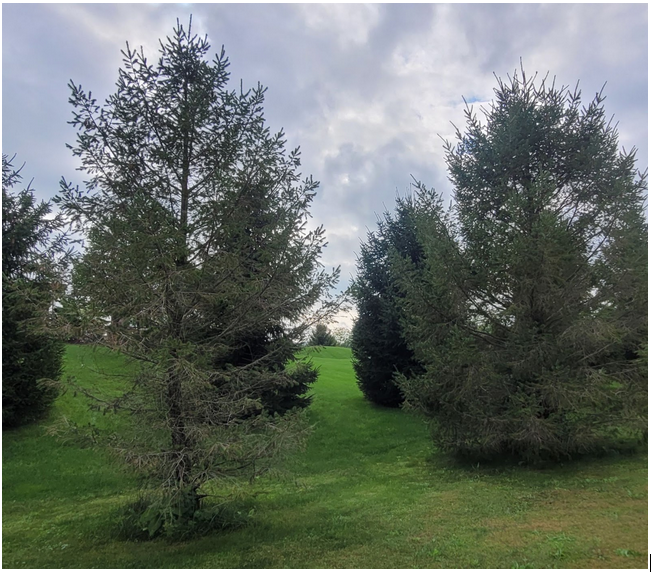Managing Needle Cast Diseases on Douglas Fir and Spruce
A number of needle cast diseases are affecting fir and spruce trees. Both Rhabdocline and Swiss needle cast can affect Douglas fir. On spruces, including Colorado blue and Engelmann, the needle casting disease is called Rhizosphaera. Rhizosphaera also affects white spruce and Norway spruce, but it is less common and generally only happens when they are grown under stressful conditions.
As the name implies, needle cast diseases cause the needles to turn brown and fall off. This gives the tree a thin, unhealthy appearance, typically with only the current year’s growth remaining on the tree. Branch die back begins to occur if the majority of the tree’s needles are infected for 3 to 4 years in a row. Ultimately the tree may decline to the point that it can no longer survive.
Douglas fir affected by Rhabdocline needle cast develop yellow spots on the previous year’s needles from March through May. These yellow spots enlarge, becoming reddish brown patches on otherwise green needles. Affected needles eventually fall.
The fungi causing these diseases require high moisture and warm temperatures, typical of May and June here in central Pennsylvania. Additionally, needle casting diseases are more severe on the lower half of trees due to higher moisture levels in the lower canopy where the foliage and branching pattern is more dense.
Both Colorado blue and Engelmann spruce as well as Douglas fir are native to the Rocky Mountains where the climate is both cooler and dryer. The trees do not do well in our hot humid summers. This puts the trees under stress, making them more susceptible to disease and other pest issues.
As a preventative, ensure trees are widely spaced to provide good air circulation throughout the canopy. This means that densely planted trees should be thinned out by removing select trees. This will also provide proper growing space to accommodate mature tree size. If trees are in a landscape with a sprinkler irrigation system ensure it is not spraying onto the needles.
When establishing new spruce or fir tree plantings, place them in locations where good air circulation is available. However, it is no longer advisable to plant Colorado blue spruce or Douglas fir since they are not well adapted to Pennsylvania’s moist, humid growing season. Norway spruce, white spruce and white fir would be much better choices. You may want to also consider eastern white pine or even eastern red cedar and arborvitae.
Fungicide treatments are often necessary to control needle cast and ensure the survival and health of spruce and fir planted in landscape settings. The entire tree’s crown must be treated with a fungicide in the early part of the growing season. This protects the new growth as the shoots elongate. Multiple fungicide applications are necessary over consecutive years.
Next Steps and Getting Help
The arborists at Cutting Edge Tree Professionals can assist you with new tree plantings, thinning out existing trees that were planted too close, as well as treating infected trees with a fungicide. Contact us today for a free estimate.

